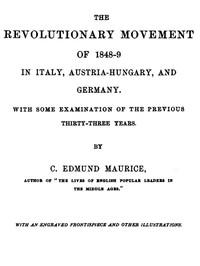|
|
Read this ebook for free! No credit card needed, absolutely nothing to pay.Words: 156352 in 20 pages
This is an ebook sharing website. You can read the uploaded ebooks for free here. No credit cards needed, nothing to pay. If you want to own a digital copy of the ebook, or want to read offline with your favorite ebook-reader, then you can choose to buy and download the ebook.

: Encyclopaedia Britannica 11th Edition Hearing to Helmond Volume 13 Slice 2 by Various - Encyclopedias and dictionaries@FreeBooksWed 07 Jun, 2023 direct measurements of the quantity of heat disengaged by compressing air, and also of the heat absorbed when the air was allowed to expand against atmospheric pressure; as the result he deduced the value 798 foot-pounds for the mechanical equivalent of 1 B.Th.U. He also showed that there was no appreciable absorption of heat when air was allowed to expand in such a manner as not to develop mechanical power, and he pointed out that the mechanical equivalent of heat could not be satisfactorily deduced from the relations of the specific heats, because the knowledge of the specific heats of gases at that time was of so uncertain a character. He attributed most weight to his later determinations of the mechanical equivalent made by the direct method of friction of liquids. He showed that the results obtained with different liquids, water, mercury and sperm oil, were the same, namely, 782 foot-pounds; and finally repeating the method with water, using all the precautions and improvements which his experience had suggested, he obtained the value 772 foot-pounds, which was accepted universally for many years, and has only recently required alteration on account of the more exact definition of the heat unit, and the standard scale of temperature . The great value of Joule's work for the general establishment of the principle of the conservation of energy lay in the variety and completeness of the experimental evidence he adduced. It was not sufficient to find the relation between heat and mechanical work or other forms of energy in one particular case. It was necessary to show that the same relation held in all cases which could be examined experimentally, and that the ratio of equivalence of the different forms of energy, measured in different ways, was independent of the manner in which the conversion was effected and of the material or working substance employed. The number of units of mechanical work equivalent to one unit of heat is generally called the mechanical equivalent of heat, or Joule's equivalent, and is denoted by the letter J. Its numerical value depends on the units employed for heat and mechanical energy respectively. The values of the equivalent in terms of the units most commonly employed at the present time are as follows:-- The water for the heat units is supposed to be taken at 20? C. or 68? F., and the degree of temperature is supposed to be measured by the hydrogen thermometer. The acceleration of gravity in latitude 45? is taken as 980.7 C.G.S. For details of more recent and accurate methods of determination, the reader should refer to the article CALORIMETRY, where tables of the variation of the specific heat of water with temperature are also given. The second law of thermodynamics is a title often used to denote Carnot's principle or some equivalent mathematical expression. In some cases this title is not conferred on Carnot's principle itself, but on some axiom from which the principle may be indirectly deduced. These axioms, however, cannot as a rule be directly applied, so that it would appear preferable to take Carnot's principle itself as the second law. It may be observed that, as a matter of history, Carnot's principle was established and generally admitted before the principle of the conservation of energy as applied to heat, and that from this point of view the titles, first and second laws, are not particularly appropriate. That a quantity of heat equivalent to the work performed actually disappears when a gas does work in expansion, was first shown by Joule in the paper on condensation and rarefaction of air already referred to. At the conclusion of this paper he felt justified by direct experimental evidence in reasserting definitely the hypothesis of S?guin that "the steam while expanding in the cylinder loses heat in quantity exactly proportional to the mechanical force developed, and that on the condensation of the steam the heat thus converted into power is not given back." He did not see his way to reconcile this conclusion with Clapeyron's description of Carnot's cycle. At a later date, in a letter to Professor W. Thomson , he pointed out that, since, according to his own experiments, the work done in the expansion of a gas at constant temperature is equivalent to the heat absorbed, by equating Carnot's expressions for the work done and the heat absorbed, the value of Carnot's function F?t must be equal to J/T, in order to reconcile his principle with the mechanical theory. which, he observed, agrees in form with that found by Rankine. It is often urged that the gas-engine is relatively less efficient than the steam-engine, because, although it has a much higher absolute efficiency, it does not utilize so large a fraction of its temperature range, reckoning that of the steam-engine from the temperature of the boiler to that of the condenser, and that of the gas-engine from the maximum temperature of combustion to that of the air. This is not quite fair, and has given rise to the mistaken notion that "there is an immense margin for improvement in the gas-engine," which is not the case if the practical limitations of volume are rightly considered. If expansion could be carried out in accordance with Carnot's principle of maximum efficiency, down to the lower limit of temperature 0, with rejection of heat at 0 during compression to the original volume V0, it would no doubt be possible to obtain an ideal efficiency of nearly 80%. But this would be quite impracticable, as it would require expansion to about 100 times v0, or 500 times the compression volume. Some advantage no doubt might be obtained by carrying the expansion beyond the original volume. This has been done, but is not found to be worth the extra complication. A more practical method, which has been applied by Diesel for liquid fuel, is to introduce the fuel at the end of compression, and adjust the supply in such a manner as to give combustion at nearly constant pressure. This makes it possible to employ higher compression, with a corresponding increase in the ratio of expansion and the theoretical efficiency. With a compression ratio of 14, an indicated efficiency of 40% has been obtained In this way, but owing to additional complications the brake efficiency was only 31%, which is hardly any improvement on the brake efficiency of 30% obtained with the ordinary type of gas-engine. Although Carnot's principle makes it possible to calculate in every case what the limiting possible efficiency would be for any kind of cycle if all heat losses were abolished, it is very necessary, in applying the principle to practical cases, to take account of the possibility of avoiding the heat losses which are supposed to be absent, and of other practical limitations in the working of the actual engine. An immense amount of time and ingenuity has been wasted in striving to realize impossible margins of ideal efficiency, which a close study of the practical conditions would have shown to be illusory. As Carnot remarks at the conclusion of his essay: "Economy of fuel is only one of the conditions a heat-engine must satisfy; in many cases it is only secondary, and must often give way to considerations of safety, strength and wearing qualities of the machine, of smallness of space occupied, or of expense in erecting. To know how to appreciate justly in each case the considerations of convenience and economy, to be able to distinguish the essential from the accessory, to balance all fairly, and finally to arrive at the best result by the simplest means, such must be the principal talent of the man called on to direct and co-ordinate the work of his fellows for the attainment of a useful object of any kind." TRANSFERENCE OF HEAT In the majority of cases of transference of heat all three modes of transference are simultaneously operative in a greater or less degree, and the combined effect is generally of great complexity. The different modes of transference are subject to widely different laws, and the difficulty of disentangling their effects and subjecting them to calculation is often one of the most serious obstacles in the experimental investigation of heat. In space void of matter, we should have pure radiation, but it is difficult to obtain so perfect a vacuum that the effects of the residual gas in transferring heat by conduction or convection are inappreciable. In the interior of an opaque solid we should have pure conduction, but if the solid is sensibly transparent in thin layers there must also be an internal radiation, while in a liquid or a gas it is very difficult to eliminate the effects of convection. These difficulties are well illustrated in the historical development of the subject by the experimental investigations which have been made to determine the laws of heat-transference, such as the laws of cooling, of radiation and of conduction. in which t is the temperature of the thermometer, and t0 that of the enclosure, a is a constant having the value 1.0075, and the coefficient A depends on the form of the bulb and the nature of its surface. For the ranges of temperature they employed, this formula gives much better results than Newton's, but it must be remembered that the temperatures were expressed on the arbitrary scale of the mercury thermometer, and were not corrected for the large and uncertain errors of stem-exposure . Moreover, although the effects of cooling by convection currents are practically eliminated by exhausting to 3 or 4 mm. , the rate of cooling by conduction is not materially diminished, since the conductivity, like the viscosity, is nearly independent of pressure. It has since been shown by Sir William Crookes that the rate of cooling of a mercury thermometer in a vacuum suffers a very great diminution when the pressure is reduced from 1 mm. to .001 mm., at which pressure the effect of conduction by the residual gas has practically disappeared. Dulong and Petit also observed the rate of cooling under the same conditions with the enclosure filled with various gases. They found that the cooling effect of the gas could be represented by adding to the term already given as representing radiation, an expression of the form They found that the cooling effect of convection, unlike that of radiation, was independent of the nature of the surface of the thermometer, whether silvered or blackened, that it varied as some power c of the pressure p, and that it was independent of the absolute temperature of the enclosure, but varied as the excess temperature raised to the power 1.233. This highly artificial result undoubtedly contains some elements of truth, but could only be applied to experiments similar to those from which it was derived. F. Herv? de la Provostaye and P. Q. Desains , in repeating these experiments under various conditions, found that the coefficients A and B were to some extent dependent on the temperature, and that the manner in which the cooling effect varied with the pressure depended on the form and size of the enclosure. It is evident that this should be the case, since the cooling effect of the gas depends partly on convective currents. which are necessarily greatly modified by the form of the enclosure in a manner which it would appear hopeless to attempt to represent by any general formula. Free books android app tbrJar TBR JAR Read Free books online gutenberg More posts by @FreeBooks
: The Huguenot: A Tale of the French Protestants. Volumes I-III by James G P R George Payne Rainsford - Huguenots Fiction@FreeBooksWed 07 Jun, 2023

: Agincourt: A Romance The Works of G. P. R. James Volume XX by James G P R George Payne Rainsford - Agincourt Battle of Agincourt France 1415 Fiction@FreeBooksWed 07 Jun, 2023
|
Terms of Use Stock Market News! © gutenberg.org.in2025 All Rights reserved.






